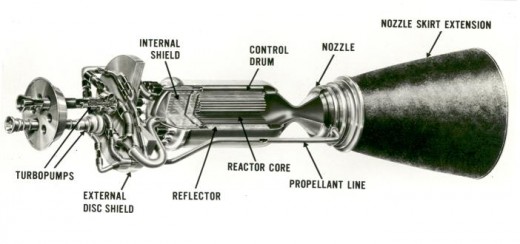Russia to Build Nuclear Rocket
Russian NERVA
October 29, 2009
NERVA stands for Nuclear Engine for Rocket Vehicle Application
Russia announced plans to build a nuclear powered rocket for manned exploration and possible colonization of Mars. Anatoly Perminov, Russia's space chief, first proposed building the ship at a government meeting last Wednesday, October 28, 2009. Though Perminov did not announce the purpose of such a rocket at the meeting, plans were revealed today. Russian President Dmitry Medvedev supported the plan and urged the federal government to find the money to back research and development.
Perminov wants to see the nuclear spaceship used for human flights to other planets, including Mars. He went on to say that the project is challenging technologically, but Russia's long experience with nuclear fuels should be applied to the effort. Perminov feels the design could be completed by 2012 with a completed ship ready by 2023. Estimates are that such a program would cost Russia 17 billion rubles (six hundred million dollars or four hundred million euros).
Perminov said: "The project is aimed at implementing large-scale space exploration programs, including a manned mission to Mars, interplanetary travel, the creation and operation of planetary outposts."

How NERVA Works
The reactor in NERVA will super-heat the hydrogen fuel running through the reactor and out the nozzle. It is estimated that this method of propulsion is twice as efficient as chemical rockets. Even though the high weight of the reactor is a factor, the combined mass of the reactor and hydrogen is still half the mass of the liquid hydrogen/oxygen required of a traditional chemical rocket.
Russia expects to use such an engine for interplanetary flight; not in earth or near earth orbits.
NERVA vs Soyuz
The Soyuz program is now forty (40) years old. This technology is still used to ferry crews and supplies to the International Space Station (ISS). A replacement for the Soyuz program has dragged on for years with no clear replacement planned.
Even though current Russian technology is forty years old it will still likely take a greater role in coming years due to NASA plans to scrap the shuttle program next year. This will mean that the Soyuz infrastructure will see greater use from both U.S. and European nations needing to get astronauts and equipment to ISS.
Perminov envisions a nuclear powered spacecraft with a mega-watt class reactor. Both the U.S. and Russia have used nuclear fuels to power batteries in satellites for the past three decades.








